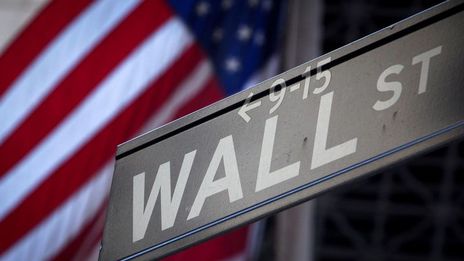July 15 (Reuters) - Longer-dated U.S. Treasury yields rose on Monday on growing bets of Donald Trump winning the presidential race after surviving an assassination attempt, which analysts say may potentially lead to stronger growth, higher inflation and more government debt.
The yield curve between two-year and 30-year Treasuries turned positive for the first time since January as increases in longer-dated yields outpaced those on shorter-dated ones, while the inversion in the closely watched 2/10 yield curve narrowed.
"Investors are pricing in much higher odds of Trump becoming president," said Gennadiy Goldberg, head of U.S. rates strategy at TD Securities in New York.
Online betting site PredictIt showed bets of an election win at 67 cents for Trump, up from Friday's 60 cents, with a victory for Democrat Joe Biden at 27 cents.
The motive behind a 20-year-old gunman's attempt on the life of Trump remained a mystery two days later, with the suspect having been shot dead and the FBI unable to identify an ideology that may have driven him to attack the former president.
Thomas Simons, U.S. economist at Jefferies in New York, said that the main areas of the "Trump trade" include less regulation, which would potentially lead to more growth.
A tax cut would also boost growth, and inflation. And "the other side of the tax cut is that there would be more borrowing, so that pressures the long end of the curve," Simons said.
Additional tariffs under Trump could also add to price pressures. However, many of these objectives would also require Republicans sweeping Congress, Simons said, which may be less likely that a Trump presidency.
Benchmark 10-year yields rose 4 basis points to 4.229%, while two-year yields fell half a basis point to 4.4554%.
The inversion in the closely watched two-year, 10-year Treasury yield curve narrowed to minus 23 basis points , the smallest inversion since January, and the gap between two-year and 30-year yields was slightly positive.
Yields have tumbled in the past two weeks on increasing expectations that the Federal Reserve will cut rates as soon as September as the jobs market softens and inflation eases back closer to the U.S. central bank's 2% annual target.
Fed Chair Jerome Powell said on Monday that the three U.S. inflation readings over the second quarter of this year do "add somewhat to confidence" that the pace of price increases is returning to the Fed's target in a sustainable fashion.
"It was pretty much as expected," Simons said. "His stance shifted very incrementally towards the potential for a rate cut."
Commentary from Fed officials this week is being closely watched before they enter into a quiet period ahead of the Fed's July 30-31 meeting.
Any potential Trump victory, meanwhile, is unlikely to alter the Fed's path in the near term.
"The Fed has to react to incoming data and really incoming data has been consistent with a cut in September," Goldberg said.
Traders are also pricing in a second and possible third rate cut by December.
(Reporting By Karen Brettell; Additional reporting by Tom Westbrook in Singapore; Editing by Arun Koyyur and Will Dunham)
















